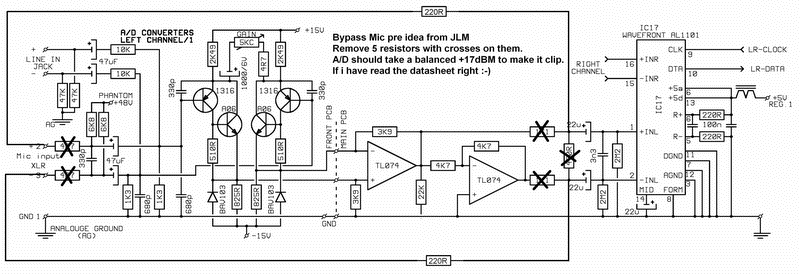sorry to bore the gurus, but could anybody help me here, it a very nube question, and i promise if i ever get my head arround this stuff i will sit in the big chair, so please dont shout to loud or long


original scematic
http://www.gyraf.dk/schematics/Behringer_ada8000_analouge.PDF
[quote author="bitman"]
Hey Hey!
I just did this to one channel and it worked great!
I hooked up a high performance channel strip output though a
pair of 10k resistors to the inputs of the 1st tlo74 opamp.
When you open up the ada8000, you will see 8 cable harneses
with 5 wires each one red and 4 black. one for each channel.
With the ADA8000 knobs facing you, the left most red wire
is the + input to the tl084 opamp, the next wire to the right
of the red one is the minus input to the opamp. I cut both wires in the middle.
I soldered a 10k resistor to the red and black wire that lead to
the ADC/DAC board and wired my channel strip outputs hi and low
to the other leg of the 10 resistors.
W
LSB[/quote]
Why did he not recreate the input prior to the 10K resistors?
on the original schematic from Gyraph it shows the line coming in and going to earth via a 47K resistor, and on to a 47uf capacitor before the 10K resistors on both the +/-.
why has he missed these bits out? this is a quest for knowlage more than anything else. one of my ada8000 is in pieces on the kitchen table as i can follow the scem better this way :grin:


sorry
Iain




